Economy of the Middle East
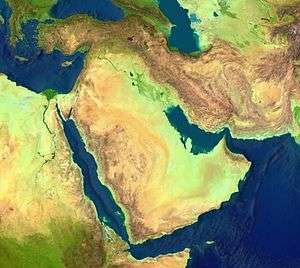
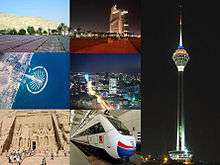
The Economy of the Middle East is very diverse, composed of Bahrain, Egypt, Iran, Iraq, Jordan, Kuwait, Lebanon, Oman, Palestine, Qatar, Saudi Arabia, Sudan, Syria, Turkey, United Arab Emirates, and Yemen. The individual economies range from hydrocarbon exporting rentier economies to government led socialist economies to free market economies.
Collectively, the region is best known for producing and exporting oil. The oil industry significantly impacts the entire region, both through the wealth that it generates and through the movement of labor. Most of the countries in the region have undertaken efforts to diversify their economies in recent years, however. In the report, Science-Metrix says the number of scientific publications listed in the Web of Science database shows that the standard growth in the Middle East, particularly in Iran and Turkey, is nearly four times faster than the world.[1]
Statistics
.
An International Monetary Fund analysis of growth determinants indicates that greater integration with international markets could provide a substantial boost to income and growth.[2]
| MENA Region | 2009 | 2011 | 2012 |
|---|---|---|---|
| Real GDP growth | 2.8 | 3.6 | 4.5 |
| Real GDP growth (PPP) | 2.7 | 3.5 | 4.5 |
| Exports (change %) | -9.5 | 2.6 | 5.2 |
| Imports (change %) | 1.2 | 4.9 | 6.6 |
| CA balance (% of GDP) | -0.1 | 1.5 | 0.9 |
| Rank | Country | GDP Per Capita[4] |
GDP (PPP) Total ($US B)[5] |
GDP (Millions of US$) 2014 |
|---|---|---|---|---|
| 1 | |
$12,900 | $876 | 416,490 |
| 2 | |
$40,700 | $150.2 | 172,608 |
| 3 | |
$42,000 | $200.4 | 399,451 |
| 5 | |
$23,900 | $69.43 | 77,779 |
| 6 | |
$21,200 | $22.85 | 33,862 |
| 7 | |
$20,400 | $581.3 | 746,248 |
| 8 | |
$16,000 | $1189.9 | 798,332 |
| 9 | |
$16,000 | $46.03 | 50,028 |
| 10 | |
$102,900 | $101.2 | 210,109 |
| 11 | |
$6,000 | $470.4 | 286,435 |
| 12 | |
$5,300 | $33.06 | 35,878 |
| 13 | |
$4,600 | $102.5 | 77,460 |
| 14 | |
$3,600 | $249.4 | 223,508 |
| 15 | |
$2,900 | $ N/A | N/A |
| 16 | |
$2,500 | $58.2 | 43,229 |
| 17 | |
$2,494 | $ N/A | N/A |
According to Bayt.com Middle East Consumer Confidence Index, March 2015: While close to a quarter (24%) of respondents believe that their country’s economy has improved relative to the past 6 months, over one third (35%) think it has gotten worse. Those in Syria were the most negative about their country’s economy with 83% of them thinking it has receded as compared to 6 months prior.
38% of respondents expect the economy in their country to improve in the next 6 months, while a quarter expect it to get worse. Overall, only 7% believe that present business conditions are ‘very good’; 24% think business conditions are ‘good’.
Half of respondents expect business conditions in their country to improve in the next year.
Respondents from Syria tended to be more pessimistic about future business conditions with about half of them (49%) thinking it will get worse.[6]
By country and territory
Bahrain
Bahrain has a per capita GDP of $27,300.[7] Bahrain has the Persian Gulf's first "post-oil" economy because the Bahraini economy does not rely on oil.[8] Since the late 20th century, Bahrain has heavily invested in the banking and tourism sectors.[9] The country's capital, Manama is home to many large financial structures. Bahrain has a high Human Development Index (ranked 48th in the world) and was recognised by the World Bank as a high income economy. Bahrain has expanded its industrial capacity to include Aluminum production and signed a Free Trade Agreement with the United States in an effort to expand its export base. Bahrain has also positioned itself as a strong player in Islamic banking in an effort to expand beyond resource exports and into a greater role in the international service industry.[10]
Lebanon
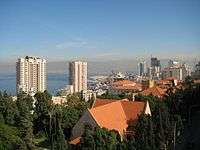
The GDP per capita of Lebanon is $16,000 in 2012 US dollars, that makes Lebanon the highest in GDP per capita after 6 GCC state members, Turkey, and Israel, as per the CIA world fact book. However, the economy of Lebanon has been severely inhibited by internal sectarian conflict and conflict with Israel. The government has incurred significant debt attempting to rebuild the national infrastructure following the Lebanese Civil War. Through foreign assistance the nation has made strides to rebuild, but still remains largely underdeveloped. Currently its trade deficit is nearly $8 billion, its external debt is $31.6 billion. Lebanon's economy is being rebuilt, especially by the remarkable growth of its industry (including cement) and services sector which presents more than 70% of the country's economy. Beirut is regaining its place as a center of the Middle East as foreign investments are making a huge comeback in all sectors and businesses and making huge profits, which will encourage more capitals investments.[11]
Egypt
Egypt derives a great deal of its foreign exchange from tourism. Consequently, most of its labor force is devoted to the service sector.[12] Agriculture is also a large part of the Egyptian economy. The Nile River provides Egypt with some of the most fertile land in the Middle East. It produces food for consumption and export as well as cotton for domestic and foreign textile production. Egypt's other great resource is the Suez Canal. Roughly 7.5% of global sea trade transits the canal providing Egypt revenues in excess of $3 billion annually.[13] Egypt's industrial base dates back to the 1960s, when the nation undertook import substitution industrialization policies.[14] The inefficiencies of the state-run program have led the government to begin a privatization program and as a result Egypt enjoyed substantial GDP growth in the first decade of the 21st century.[12] It has also taken advantage of Qualifying Industrial Zone to expand trade relations with the United States. Despite these developments Egypt remains an underdeveloped country with a per capita GDP of $5,500.[12] Egypt would be the first ever electronic Egyptian Commodities Exchange in the MENA region to facilitate the well being of its small farmers and supply of products at reasonable prices abolishing the monopoly of goods.[15][16]
Iran
Iran has one of the largest economies in the Middle East. It is the world's 18th largest by PPP. Iran's major industries are largely state owned. The nature of the Iranian state-owned enterprises has led to a degree of inefficiency. Iran ranks 69th out of 139 in Global Competitiveness Report.[17] Iran has been able to subsidize inefficient industry through large oil revenues and maintain respectable growth rates. The nature of the state-driven economy has led to significant 'brain drain' in recent years as educated Iranians seek opportunities abroad. Consequently, Iran has begun a privatization effort in order to stimulate trade in accordance with its ongoing five-year plan as well as an ambitious economic reform plan.
The most important advantage that Iran's capital market has in comparison with other regional markets is that there are 40 industries directly involved in it. Industries such as the automotive, telecommunications, agriculture, petrochemical, mining, steel iron, copper, banking and insurance, financial mediation and others trade shares at the stock market, which makes it unique in the Middle East.[18] Iran has a high potential of becoming one of the world's largest economies in the 21st century.[19]
Iraq

Nearly 30 years of fighting, against Iran in the 1980s and the United States since 1991, has had a detrimental impact on Iraqi economic growth. Oil production remains Iraq's chief economic activity. The lack of development in other sectors has resulted in 18%–30% unemployed and a depressed per capita GDP of $4,000.[20] Reconstruction aid has helped to bolster the nation's infrastructure, however, an ongoing insurgency has handicapped economic recovery.
Israel
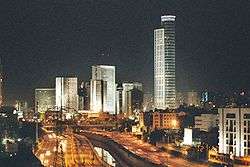
Israel's national leadership established a socialist economy when Israel was established in 1948. The purpose of this approach was to establish economic self-sufficiency, particularly agriculturally, in the face of hostile neighbors and to provide jobs for a population rapidly expanding through immigration. The socialist nature of the economy created a great deal of inefficiency which the government was able to offset through foreign aid, first in the form of West German Holocaust reparations then through direct aid, primarily from western nations.
Following the Yom Kippur War Israeli defense spending rose dramatically, exposing the weaknesses of the state-run economy.[21] The result was rampant inflation that led Israel to recall the lira in 1980 and issue the sheqel. This move did not sufficiently curb inflation and consequently the sheqel was recalled in 1985 in favor for the Israeli new sheqel, a move implemented together with a comprehensive economic stabilization program which stemmed inflation and set the stage for high growth in the 1990s. Israel had also undertaken a privatization effort beginning in the late 1970s. The economy received a boost in the early 1990s with the arrival of several hundred thousand immigrants form the former Soviet Union.[22] As a significant number of the immigrants were highly educated, Israel accelerated its privatization in order to encourage the high-skilled workers to stay. The new high-skill labor also attracted a lot of foreign direct investment. Israel's growth over the past decade has been commensurate with western developed nations as is its GDP (PPP) per-capita which is about $35,000/year – the highest of all the non natural resources dependent countries in the Middle East. It is described as "Very Highly Developed" on the UN's Human Development Index, ranking 16th among 187 world nations and highest in the Middle East in 2012.
In September 2010, Israel joined the OECD, which praised Israel's scientific and technological progress and described it as having "produced outstanding outcomes on a world scale."[23] Indeed, much of the growth in the country's economy over the past couple of decades is attributable to the software, biomedical, electronics, telecommunications and other high-technology sectors as the percentage of Israelis engaged in scientific and technological inquiry, and the amount spent on research and development (R&D) in relation to gross domestic product (GDP), is among the highest in the world.[24]
Jordan
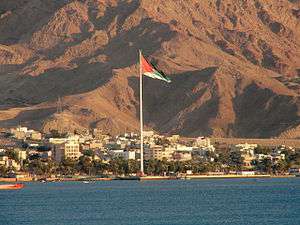
Jordan operates a rentier economy based largely on foreign aid, investment, and remittances. Jordan heavily depends on its highly skilled workforce in the oil-rich Persian Gulf to send back money to help support thousands of Jordanian families. Consequently, its economic fortunes are tied to events in the international community. Although the standard of living in Jordan is significantly higher than other countries with similar incomes, many Jordanians opt for a job abroad because of soaring costs of living and high unemployment in their native country. Jordan is dependent on those remittances which have accounted for nearly 20% of GDP since 1975.[25] Jordan's dependence has had detrimental consequences. Following Iraq's 1990 invasion of Kuwait hundreds of thousands of Palestinians were expelled from other Arab nations. For Jordan this resulted in the significant loss of remittance revenue.[26]
Although the 2003 Iraq War brought detrimental consequences to Jordan's economy at first, it gave Jordan a huge boost in trade and investment with wealthy Iraqis re-settling in Jordan; Amman become a transit point for business and trade bound to Iraq. Jordan consequently became known as the "Gateway to Iraq" and later the "Gateway to the Middle East". Jordan's pro-business and pro-Western government has created incentives and free trade zones to spur further economic growth.
Jordan's private sector growth has been given higher priority in recent years. By taking advantage of Qualifying Industrial Zones manufactured exports have increased, led largely through the growth of a textile industry.[27] Jordan's shift to a free market economy has brought unprecedented amounts of investments into the economy. Jordan has one of the freest economies in the Middle East due to several key economic reforms in the past few years. Tourism, ICT, trade, and future oil shale and uranium exports will form the backbone of Jordan's economy.
Kuwait
_headquarter.jpg)
The Kuwaiti currency is the highest-valued currency unit in the world.[28] Kuwait has the second-most free economy in the Middle East.[29] 57% of Kuwait's GDP comes from non-oil industry (mostly business services, manufacturing, retail trade, financial institutions, construction, transport and real estate).[30] Petroleum accounts for 43% of GDP, 87% of export revenues, and 75% of government income.[30][31] Kuwait also export plant fertilizers.[32] The per capita GDP is $40,700.[33] As part of a diversification plan the Kuwaiti government has invested its revenues and maintains a sizable sovereign wealth fund. These investment currently account for more than half of Kuwait's GDP.[34] 60% of Kuwait's work force are non-Kuwaitis.[33]
Oman

Oman has several different industries, including crude oil production and refining, natural and liquefied natural gas (LNG) production; construction, cement, copper, steel, chemicals and optic fiber. Oman also has substantial trade and budget surpluses. 55% of Oman's government revenues comes from the non-oil industry. Petroleum accounts for 64% of total export earnings, 45% of government revenues and 50% of GDP.[34] By 2020 Oman hopes to reduce oil revenue to just 9% of its income.[35] Along with that plan the country hopes to move away from rentier economics and employ its citizens in the labor market and reduce reliance on expatriate labor.[35] To take its first steps in economic independence it has signed a Free Trade Agreement with the United States and is seeking to do the same with the European Union, China, and Japan.[35] It is currently maneuvering itself into the re-export and heavy manufacturing markets.
Palestinian Territories
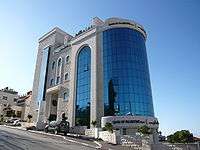
The economy of the Palestinian National Authority has been severely truncated by extensive corruption among Palestinian Authority officials, a heavy dependence on foreign aid, and the ongoing conflict with Israel. Production has dropped since the beginning of the Second Intifada in 2000. The Gaza Strip has been blockaded by Israel and Egypt since June 2007 after Hamas took control of the Palestinian territory in the course of a conflict with rival Palestinian group Fatah. In May 2010, the UN Office for the Coordination of Humanitarian Affairs stated that the formal economy in Gaza has collapsed since the imposition of the blockade.[36] The West Bank has fared slightly better since the split in the Palestinian power structure and Fatah took power in the West Bank Israel has opened some trade up. Still the Palestinian Authority is nearly entirely dependent on foreign aid. Collectively the Palestinian territories have a per capita GDP of $2,900.[37]
Qatar
Qatar currently enjoys the regions highest per capita GDP at $101,000.[38] It has derived its wealth from exploiting its natural gas reserves. With the revenues from its hydrocarbon industries Qatar has established a rentier economy. Qatar has also established the largest per capita sovereign wealth fund in the world. With a population under one-million people the government has not found it necessary to diversify its economy.
Saudi Arabia

Saudi Arabia has 20% of the known oil reserves in the world. With its oil they have a national GDP of $657 billion and a per capita GDP (PPP) of 25,700 .[39] With this revenue stream the country has become the largest rentier economy in the world. As the oil wealth grew so too did the civil service. It grew from 37,000 in 1962 to 232,000 in 1981.[34] Further, as Saudi Arabia's civil service grew so too did its reliance on foreign labor which currently stands at 5.5 million or about one-third of its working age population.[39]
Currently about 40% of Saudi Arabia's population is under the age of 15.[39] This has led the government to accelerate investment in education and infrastructure in an effort to ensure jobs for the growing population and alleviate a chronically high unemployment rate. The state has announced plans to build six 'economic cities' in order to diversify its economy.
Syria
Stemming from a 1960s nationalization effort most Syrian economy is run by the government.[40] However, owing to the inefficient public sector, significant domestic subsidies, and considerable intervention investment in Lebanon inflation and external debt have become significant problems.[41] Consequently, the Syrian government has undertaken modest privatization reform in preparation for the opening of the Damascus Stock Exchange in 2009.[42] Modest oil production and an agriculture sector lead Syria's production while most of its employment is in the service sector. Its per capita GDP stands at $4,900.[42]
Turkey

Turkey has the world's 15th largest GDP-PPP[43] and 15th largest Nominal GDP.[44] The country is a founding member of the OECD (1961) and the G-20 major economies (1999). Turkey has been part of the EU Customs Union since 31 December 1995.
Turkey is often classified as a newly industrialized country by economists and political scientists;[45][46][47] while Merrill Lynch, the World Bank and The Economist magazine describe Turkey as an emerging market economy.[48][49][50]
Turkey is restructuring its economy in an attempt to gain full European Union membership. It began this policy in the early 1970s, abandoning its previous import substitution industrialization policy.[51] As privatization has taken hold in Turkey it has brought with it significant foreign direct investment. Additionally, the Baku-Tbilisi-Ceyhan pipeline has brought revenue to Turkey and enabled it to share some of the regional hydrocarbon wealth. Turkey's economy is currently led by its automobile, agricultural and textile sectors. It has a per capita GDP of $11,200, supplemented by some 1.2 million Turks working abroad.[52]
United Arab Emirates
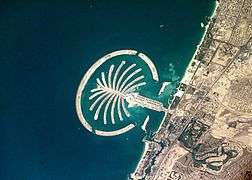
The economy of the United Arab Emirates is the second largest in the Arab world (after Saudi Arabia), with a gross domestic product (GDP) of $377 billion (AED1.38 trillion) in 2012. The United Arab Emirates has been successfully diversifying the economy. 71% of UAE's total GDP comes from non-oil sectors.[53] Oil accounts for only 2% of Dubai's GDP.[54] The UAE is also making an effort to attract foreign direct investment by offering 100% foreign ownership and no taxes.[55] Tourism is one of the main sources of revenue in the UAE.
Yemen
Yemen has plagued by chronic economic mismanagement. With 85% unemployment, the nation relies heavily on expatriate remittances.[56] The reliance on foreign labor markets proved disastrous following the 1991 Persian Gulf War when Saudi Arabia and Kuwait expelled Yemeni workers and curtailed aid to the country in response to its support of Iraq.[27] Most of Yemen's GDP comes from its limited oil production. The bulk of its labor is involved in agriculture where its primary cash crop is khat.
Job Index
The Middle East Job Index Survey conducted by Bayt.com in February 2015 states that: Overall, the Job Index has decreased by one point since the last wave of August 2014. In the UAE, the Job Index has decreased by four points since August 2014.
Three-fifths of working respondents in the MENA state that they will be hiring in the next 3 months. Plans to hire in the next 3 months are higher in the GCC, with 37% ‘definitely’ hiring, compared to 30% in the Levant and 29% in North Africa.
Looking at future hiring expectations, seven in 10 working respondents state that they would be hiring in a year’s time. The plans for hiring in a year’s time shows more positive results amongst the GCC countries, with 37% ‘definitely’ hiring after 12 months, compared to 30% in Levant and North Africa.
65% of those who plan to hire in the next 3 months indicate that they would be hiring for up to 10 positions.
Over three-fifths (64%) of working respondents state that their companies have hired new employees within the past 6 months.
The trend continues from past waves with most employers planning to hire people for junior or mid-level executive positions.
Accountants (17%) and Sales Managers (16%) are the top job roles companies will be looking for in the next 3 months.
Graduation/Post Graduation degrees in Business Management is still the most sought after qualification in the MENA. This is followed by degrees in Engineering and Commerce.
Good communication skills in Arabic and English is still the top attribute companies look for in a respondent, followed by ‘being a team player’.
In terms of experience, managerial skills are still the most sought after, followed by experience in sales and marketing, and computer skills.
Overall, two-fifths believe that their country of residence is more attractive as a job market in comparison to other MENA countries.
When compared to the Levant region (16%) and North Africa (19%), significantly more respondents in the GCC (40%) think that their country of residence is a more attractive job market.
Almost half of working respondents rate their own industry as being more attractive as a potential employer in comparison to other industries.
Overall, Banking and Finance still emerges on top in terms of the industry which respondents consider to be attracting/retaining talent in their country of residence[57]
Economic History
around 1800
Textile production was the most important industry, complemented by food-processing, furniture and specialized industries in some places. Industrial production was mostly concentrated in the cities. With exception of Istanbul, the cities themselves were all situated next to a substantial area of cultivatable land with soil quality. Most industries, with fixed price and guild systems, were not conducive to innovation, even if a certain quality of craftsmanship was preserved. Another important urban function was to organize caravan trade.[58]
the early nineteenth century
During the early nineteenth century, the situation in the Middle east changed dramatically because of three development paths: mild reforms and problematic openness in the Ottoman imperial core, forced development in Egypt and direct colonization in central Asia and Algeria.[59]
20th century
After the period of deindustrialization, during the 20th century, political movements in the Middle East not only demanded a political renaissance, but many of its leaders also saw the need for reindustrialization.[60]
See also
- Middle East economic integration
- Start-up Nation
- Economy of Asia
- Economy of Africa
- Middle East and globalization
- List of stock exchanges in Southwest Asia
References
- ↑ http://www.presstv.com/detail.aspx?id=118977§ionid=3510208
- ↑
- ↑
- ↑ CIA - The World Factbook GDP Country Comparison (Per Capita PPP)
- ↑ CIA - The World Factbook GDP Country Comparison (PPP)
- ↑ Bayt.com Middle East Consumer Confidence Index-March 2015, Bayt.com. Retrieved 29 June 2015
- ↑ CIA World Factbook - Bahrain's Economy
- ↑ "Bahrain: Reform-Promise and Reality" (PDF). J.E. Peterson. p. 157.
- ↑ "Bahrain's economy praised for diversity and sustainability". Bahrain Economic Development Board. Archived from the original on December 28, 2010. Retrieved 24 June 2012.
- ↑ Marcus Noland and Howard Pack, Arab Economies in a Changing World (Washington D.C.: Peterson Institute for International Economics, 2007), 119.
- ↑ CIA World Factbook - Lebanon's Economy
- 1 2 3 CIA World Factbook - Egypt's Economy
- ↑ BBC News Suez Canal Fact Sheet
- ↑ Alan Richards and John Waterbury, A Political Economy of the Middle East (Boulder, CO: Westview Press, 2008), 31.
- ↑ "Global consortium to inject $50m in Egypt commodity exchange". MUBASHER. 26 November 2015. Retrieved November 28, 2015.
- ↑ "Egypt signs protocol to establish commodities exchanges". The Cairo Post. 26 November 2015. Retrieved November 30, 2015.
- ↑ World Economic Forum: Iran ranks 69th out of 139 in global competitiveness Retrieved September 18, 2010
- ↑ "Iran offers incentives to draw investors". Presstv.com. 2010-04-26. Retrieved 2010-07-29.
- ↑ "The N-11: More Than an Acronym" Goldman Sachs study of N-11 nations, Global Economics Paper No: 153, March 28, 2007
- ↑ CIA World Factbook - Iraq's Economy
- ↑ Richards and Waterbury, 204-205.
- ↑ Immigration from the former Soviet Union
- ↑ OECD's announcement.
- ↑ Ministry of Industry, Trade & Labor - Foreign Trade Administration
- ↑ Noland and Pack, 121.
- ↑ Noland and Pack, 169.
- 1 2 Richards and Waterbury, 68.
- ↑ http://www.siliconindia.com/finance/news/10-Most-Valuable-Currencies-in-the-World-nid-109953.html
- ↑ Alt, Robert. "Index of Economic Freedom". Heritage.org. Retrieved 28 June 2010.
- 1 2 Kuwait Economic Report
- ↑ http://www.omc.ap.gov.in/kuwait.aspx
- ↑ https://www.cia.gov/library/publications/the-world-factbook/fields/2049.html#ku
- 1 2 CIA World Factbook - Kuwait's Economy
- 1 2 3 Richards and Waterbury, 203.
- 1 2 3 CIA World Factbook - Oman's Economy
- ↑ "PRESS STATEMENT - UN HUMANITARIAN COORDINATOR:GAZA BLOCKADE SUFFOCATING AGRICULTURE SECTOR, CREATING FOOD INSECURITY" (PDF). UN Office for the Coordination of Humanitarian Affairs, oPt (OCHA). 2010-05-25. Retrieved 30 May 2010.
- ↑ CIA World Factbook - West Bank Economy
- ↑ CIA World Factbook - Qatar's Economy
- 1 2 3 CIA World Factbook - Saudi Arabia's Economy
- ↑ Richards and Waterbury, 194.
- ↑ Richards and Waterbury, 195.
- 1 2 CIA World Factbook - Syria's Economy
- ↑ The World Bank: World Economic Indicators Database. GDP (PPP) 2008. Data for the year 2008. Last revised on July 1, 2009.
- ↑ The World Bank: World Economic Indicators Database. GDP (Nominal) 2008. Data for the year 2008. Last revised on July 1, 2009.
- ↑ Mauro F. Guillén (2003). "Multinationals, Ideology, and Organized Labor". The Limits of Convergence. Princeton University Press. pp. 126 (Table 5.1). ISBN 0-691-11633-4.
- ↑ David Waugh (2000). "Manufacturing industries (chapter 19), World development (chapter 22)". Geography, An Integrated Approach (3rd ed.). Nelson Thornes Ltd. pp. 563, 576–579, 633, and 640. ISBN 0-17-444706-X.
- ↑ N. Gregory Mankiw (2007). Principles of Economics (4th ed.). ISBN 0-324-22472-9.
- ↑ http://news.xinhuanet.com/english/2009-06/28/content_11612750.htm
- ↑ "Fund management". The Economist. 2009-07-16.
- ↑ http://www.worldbank.org.tr/WBSITE/EXTERNAL/COUNTRIES/ECAEXT/TURKEYEXTN/0,,contentMDK:20630704~menuPK:361720~pagePK:141137~piPK:141127~theSitePK:361712,00.html
- ↑ Richards and Waterbury, 28.
- ↑ CIA World Factbook - Turkey's Economy
- ↑ "Diversification raises non-oil share of UAE's GDP to 71%".
- ↑ "Oil Makes Up 2% of Dubai GDP Post-Diversification".
- ↑ CIA World Factbook - United Arab Emirates' Economy
- ↑ CIA World Factbook - Yemen's Economy
- ↑ The Bayt.com Middle East Job Index Survey - February 2015, Bayt.com. Retrieved 29 June 2015
- ↑ Baten, Jörg (2016). A History of the Global Economy. From 1500 to the Present. Cambridge University Press. p. 214ff. ISBN 9781107507180.
- ↑ Baten, Jörg (2016). A History of the Global Economy. From 1500 to the Present. Cambridge University Press. p. 216f. ISBN 9781107507180.
- ↑ Baten, Jörg (2016). A History of the Global Economy. From 1500 to the Present. Cambridge University Press. p. 226. ISBN 9781107507180.
Further reading
- Hakimian, Hassan; Jeffrey Nugent (2004). Trade Policy and Economic Integration in the Middle East and North Africa: Economic Boundaries in Flux. New York: Routledge.
- Henry, Clement; Robert Springbord (2001). Globalization and the Politics of Development in the Middle East. Cambridge: Cambridge University Press. ISBN 0-521-62631-5.
- Noland, Marcus; Howard Pack (2007). The Arab Economies in a Changing World. Washington, D.C.: Peterson Institute for International Economics. ISBN 978-0-88132-393-1.
- Richards, Alan; John Waterbury (2008). A Political Economy of the Middle East. Boulder, Colorado: Westview Press. ISBN 978-0-8133-4348-8.
External links
- 2010 Economic Prospects for the Middle East and North Africa Region - World Bank
- 2010 Regional Economic Outlook: Middle East and Central Asia - International Monetary Fund
- 2011 Regional Economic Outlook: Middle East and Central Asia - International Monetary Fund
- Changing Economy of the Middle East in 2000 from the Dean Peter Krogh Foreign Affairs Digital Archives
